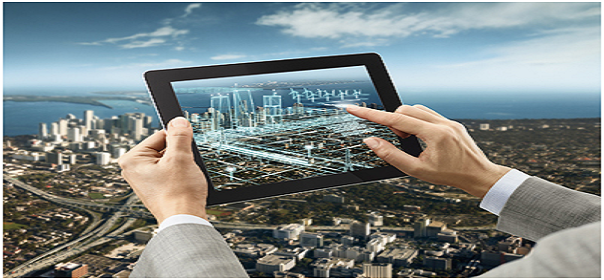Smart Cities will be characterized by power grids that will be able to balance electricity supply and demand. This will start with buildings that learn occupants’ energy needs, integrate vehicle batteries into their energy forecasts, respond to changing weather conditions, and automatically alter their behavior to maximize their efficiency. Intelligent buildings: setting a new standard of “smart” for the future Solutions that offer savings potentials for both new and existing structures.
Smart moves of Smart Cities
Smart Cities are expected to solve problems beyond the basic issues related to power, water, and transportation. Pilot projects are attempting to improve issues such as asset utilization, energy conservation, quality of life for citizens, healthcare, ease of transportation, and response time for emergencies. Some interesting examples are outlined below:
- Smart bins in Barcelona: Sensors on bins to test the possibility of optimizing the routes of refuse collection vans by only sending them to full bins. Approximately 10% of current costs could be saved this way.
- Intelligent streetlights in Glasgow: A pilot is underway to test if sensors can save energy by allowing lights to automatically turn on and off when people walk past them at night.
- Traffic management in Singapore: Electronic road pricing (ERP) and sensors attached to taxis to enable mapping of trafc conditions have also helped to reduce the number of journeys undertaken by private cars.
- Citywide sensing in Santander: Santander has one of the largest citywide sensing pilots in the world, with more than 12,000 sensors collecting data on everything from parking space availability to air quality.
The perks of a cohesive Smart City
When properly built, smart cities reap countless benefits that include:
- Sustainability. Cities that embrace IoT technology can optimize their use of resources, including water, fuel, energy, and even waste. The city of Los Angeles, for example, installed LED bulbs in its streetlights and successfully cut its energy use by 60 percent.
- Community. A city that illustrates a commitment to improvement through smart initiatives is more likely to build strong, well-informed, and healthy communities.
- Growth. Smart cities don’t just save municipalities money and improve the lives of current residents; they also attract new residents. Who wouldn’t want to live and work in a city with great air quality, low utility costs, reliable public transit, and free-flowing Wi-Fi?
Businesses in particular flock to cities that take care of their smart infrastructure because it lowers operating costs. One study predicts the global business community will spend more than $18 billion incorporating smart technology into buildings in 2017 — which far surpasses the $5.5 billion it spent back in 2012.
The energy savings in smart buildings make the move worthwhile, typically paying for itself on an enterprise level within a year or two. Smart windows alone can save up to 26 percent on cooling and 67 percent on lighting costs.
In order for a smart city to truly bring its IoT-driven features to life and see long-term value in its investment, it must create a cohesive and holistic smart infrastructure. Every department must be involved and understand how IoT-driven solutions can benefit them, and they must work together to create a seamless, streamlined experience that optimizes life for its current (and future) residents.
Smart Building solution for smart living
Smart Buildings can address a variety of issues for citizens, governments, and construction companies. These can range from physical security, parking problems, and energy conservation to climate control, general services, and quality of life. The key benets of Smart Buildings are experiential in nature, which is difficult, if not impossible, to quantify in terms of a direct ROI in absolute dollar terms. Currently, the main focus for Smart Building initiatives should be on improving the overall user experience by generating greater value for all related stakeholders. This ‘value’ may take on many forms, including improved services, better facilities and asset management, and reduced carbon emissions. While the ultimate aim will be to monetize this value in order to drive tangible nancial returns, this should be regarded as a longer-term goal.
From an energy perspective, Smart Buildings become an important asset for the Smart Grid and help support the Smart City goal of improved efciency, in terms of reducing energy consumption and increasing energy reliability. Smart Building technologies create adaptive facilities that operate in new ways by automatically responding to both internal policies and schedules and external signals such as demand-response events. By participating in utility programs such as demand-response, building owners increase the value of their properties and can thus charge premium rents from tenants

